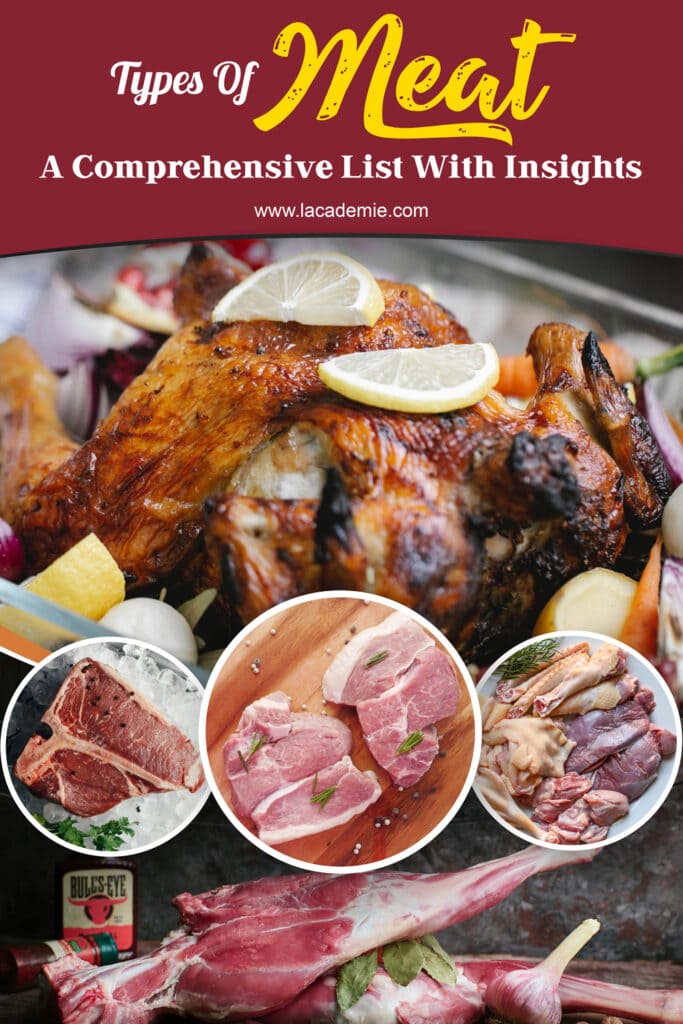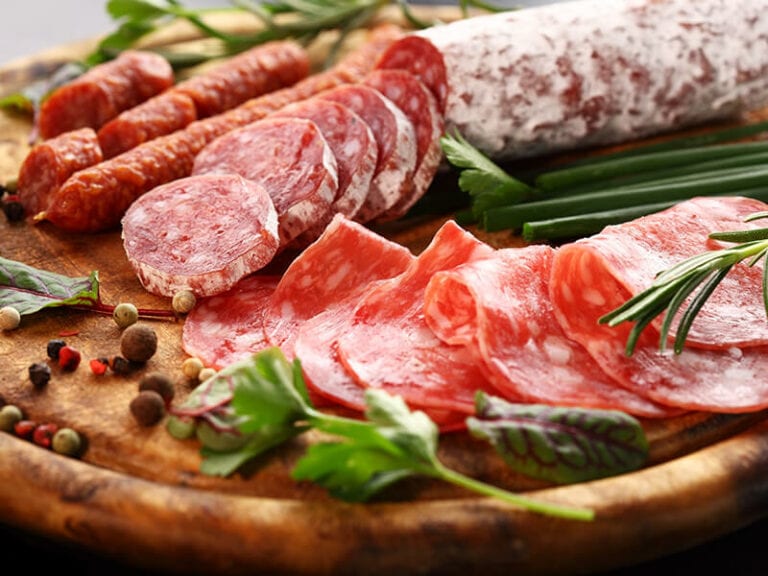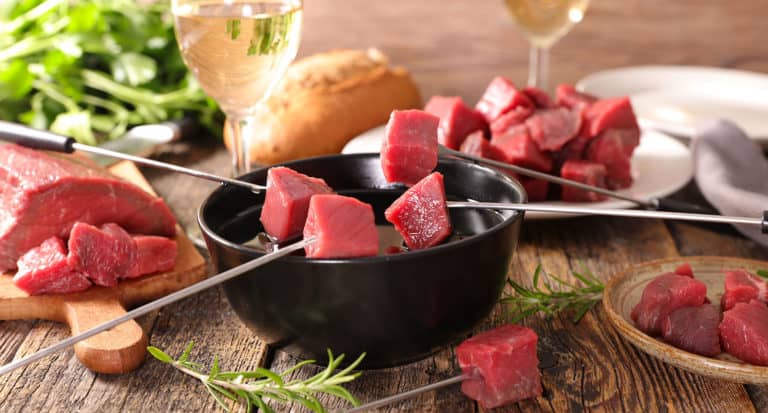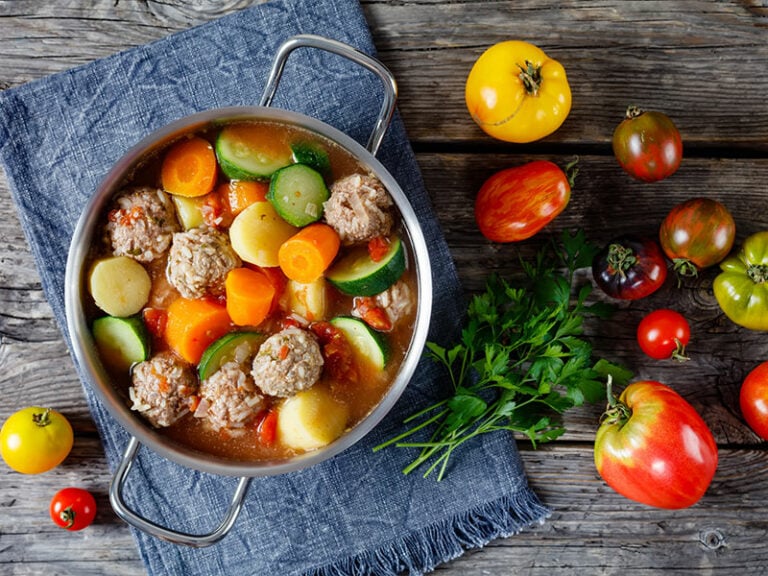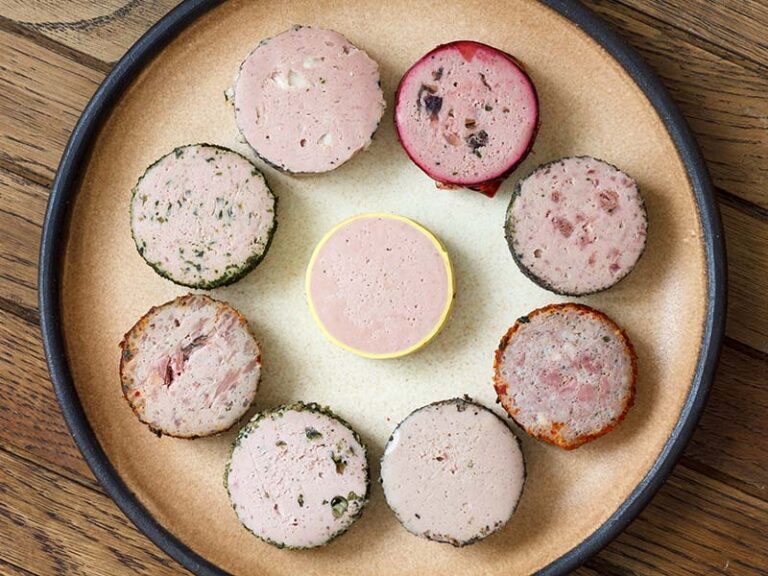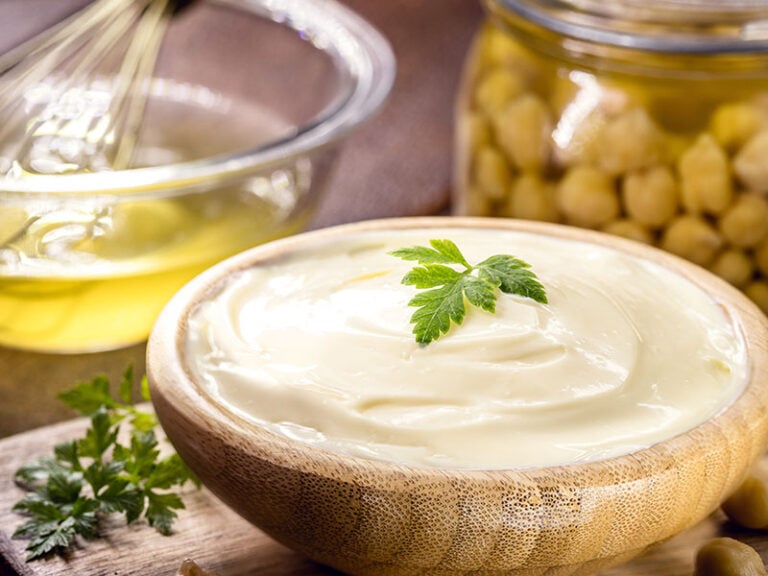How many different types of meat have you eaten before? In reality, there are countless meat kinds, but this post will mainly cover the common ones with their good and bad sides so you can find better solutions for your daily diet.
Meat has always been a staple and wonderful kind of food in human life. This is a key protein source to nourish our bodies. Thus, the meat industry is 1 of the biggest segments worldwide.
Plus, meat has played an essential part in many cuisines around the world. Meat consumption levels might be different based on countries, cultures, and religions. Some kinds of meat are forbidden in some beliefs, while they might be more popular in other countries.
Nowadays, most types of meat that you consume are raised livestock, but some are hunted food. But overall, there are 2 main types of meat, including red and white meat.
And if you wonder which one is better for your health, this post will give you a comprehensive answer that nowhere else can. So read on and be ready to grasp new information.
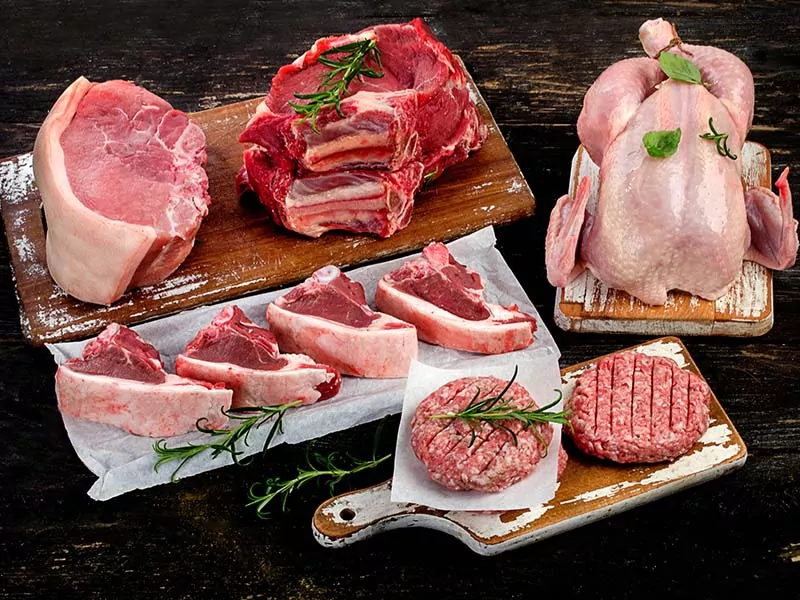
Red Meat Vs. White Meat
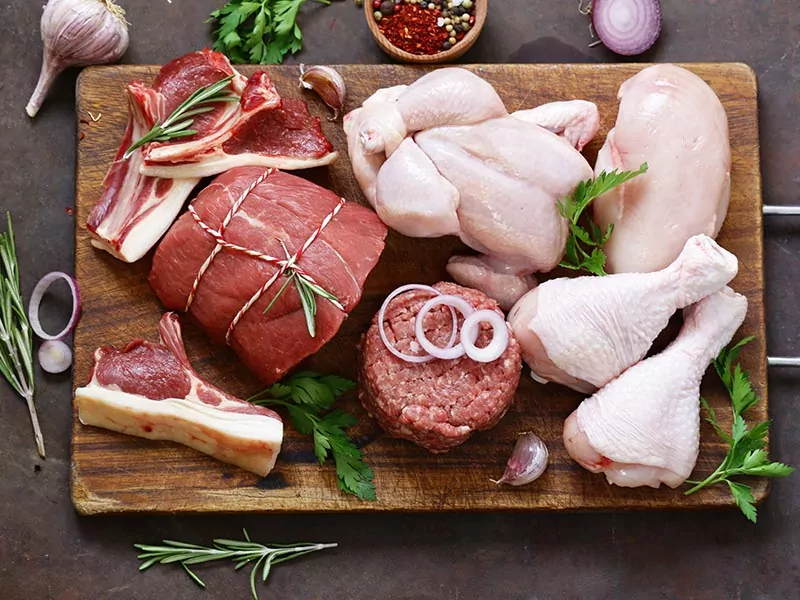
No one can deny the importance of meat in the human diet, but have you ever wondered which one can offer higher health benefits between red meat and white meat? Here are some key points that you should note:
- Both meat types are good for human health thanks to their vitamins and minerals. However, white meat is a better source of leaner protein with lower fat levels, while red meat contains higher fat content
- Red meat also has a higher amount of B vitamins, iron, and zinc.
- Cooking is one of the main factors that affect meat’s health benefits. Avoid cooking your food with high heat to reduce cancer risks.
- You should only consume red and white meat in moderation.
For easier understanding, you can check the table below for a brief nutritional comparison of 15 meat types in red and white groups.
5 Different Red Meat Types
As the name suggests, in gastronomy, red meat refers to all meat types with red color when raw and turning dark when cooked. However, in culinary, the term “red meat” is slightly different as it only indicates the mammals’ flesh.
These meat types have this color since they contain a high level of myoglobin – an iron-based protein. With the following 5 various mammals’ meat, I will explain this protein and other nutrients in more detail.
1. Pork
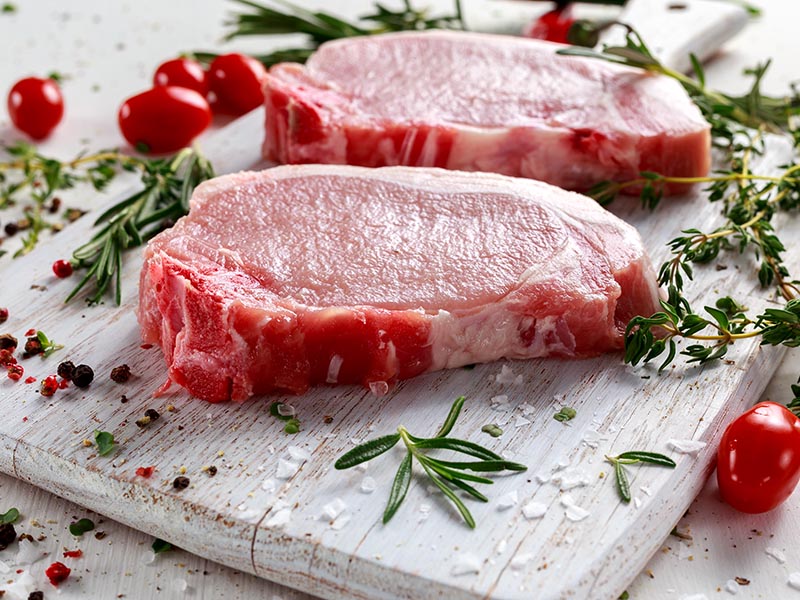
Pork is a name for pig’s flesh, also the most widely-used meat globally, from Western to Asian countries. Pork is a type of red meat because of its myoglobin content. They also contain other nutrients and come at a very affordable price, no wonder why pork is so popular.
The first evidence of domesticated pigs was in 13,000 BC. Today, pork is mass-produced (which occupies 36% of global meat production) with several pork breeds, so you can easily buy it anywhere all year round.
Pork flesh is pink or white (at some parts of a pig). People usually cook or preserve pork before consuming it. Moreover, several food types are pork-based, like sausage, bacon, ham, salami, etc. There are also numerous recipes to prepare pork and turn it into delicacies.
Moreover, several food types are pork-based, like sausage, bacon, ham, salami, etc. There are also numerous recipes to prepare pork and turn it into delicacies.
Butchers sell pork in different cuts or ground meat. You can find many recipes cooked with ground pork too! Or if you accidentally cook too much pork, I have got your back with various leftover pork ideas. In short, there are a thousand ways to cook pork.
In the world, China is the biggest pork consumption country. However, pork is not the ideal meat in the Muslim, Hindu, and Jewish diets. Certain rules prohibit consuming this meat type in these religions.
Pork is a good source of vitamin B, zinc, and selenium. Their fat varies based on the cuts, but they are still a good choice to supply omega 6 fatty acids to your body. However, ensure the meat is not contaminated with tapeworm or other bacteria to avoid foodborne.
Nutrients (100g raw loin)
- Energy: 1,013 kJ
- Total fat: 27.92 g
- Protein: 13.32 g
- Vitamin B6: 0.46 mg
- Vitamin B12: 0.70 μg
- Iron: 0.87 mg
- Choline: 93.9 mg
- Phosphorus: 246 mg
- Potassium: 423 mg
- Zinc: 2.39 mg
Benefits:
- Affordable yet packed with many nutrients.
- Maintain human muscle mass.
- Can promote exercise performance.
Drawbacks:
- Contain a high level of fat which is not good for the heart if consumed excessively.
- Uncooked pork might contain bacteria and parasites, which can result in foodborne illness.
Is it acceptable to eat pork for A Christian? Check this explanation to find out!
2. Beef
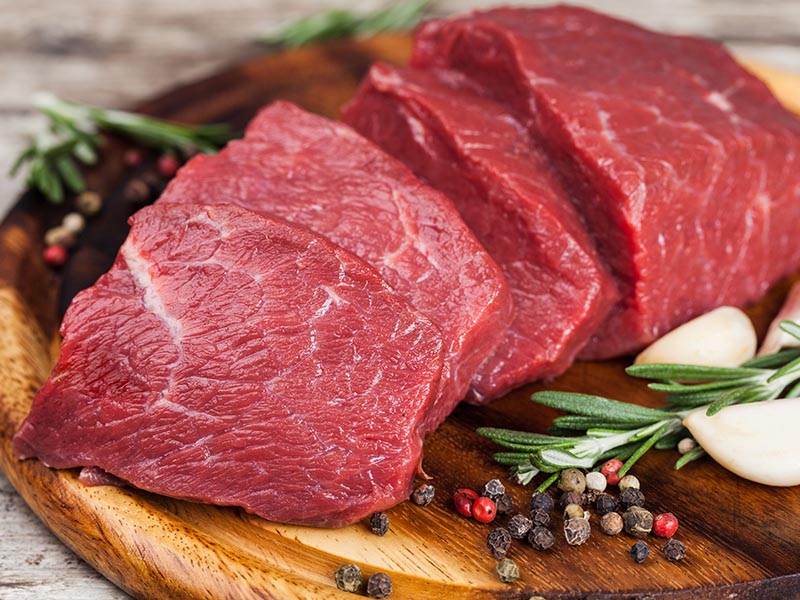
In culinary, beef is the term to refer to the meat of cattle (aka cow). People have domesticated cattle to get their meat, milk, and leather for a long time. The first domestic cattle were found 10,500 years ago.
Beef is the third most consumed meat, after pork and poultry. While people often associate it with steak, beef and steak actually have several differences.
Beef can come in various cuts or ground ones, and there are several kinds of ground beef, so you can create plenty of meal prep with ground beef with ease. Besides, America is accounting for the biggest beef producer.
There are many cow breeds. Some are easy to buy; some are not, like the pricey Wagyū cattle from Japan. Luckily, most beef that you can buy in the marketplace is not too expensive. You also have many ways to use leftover roasted beef to make new dishes to save more money.
Unlike pork, humans can consume raw beef. Steak tartare in French cuisine uses chopped raw beef to make. Or some varieties of sashimi – a signature Japanese food, served with raw slices of this meat.
It is very easy to recognize raw beef with raw pork because beef is darker in red color. Its myoglobin level is higher than pork. Beef is also rich in zinc, iron, and vitamin B12, so if you consume them in appropriate amounts, they are good for your health.
The fat content in beef is mostly oleic acid (the same fat in olive oil), increasing its health benefits for humans. But if you consume them too much, this red meat can increase the cancer risk, especially bowel cancer and coronary heart disease.
Nutrients (100g – raw ground beef )
- Energy: 1,033.45 kJ
- Saturated fat: 7.3 g
- Total fat: 19 g
- Protein: 17 g
- Vitamin B3: 4.31 mg
- Vitamin B6: 0.328 mg
- Vitamin B12: 2.15 μg
- Iron: 1.97 mg
- Phosphorus: 160 mg
- Potassium: 274 mg
- Zinc: 4.23 mg
Benefits:
- Rich dietary sources of carnitine, niacin, iron, vitamin B12, and zinc.
- Can prevent iron deficiency anemia.
- Lean beef cuts are good for a healthy diet (if consumed moderately).
Drawbacks:
- High in cholesterol and saturated fat.
- Beef is linked to a higher cancer risk (if you eat them too much).
If beefsteak is your favorite, you might want to learn some tips from Gordan Ramsay through this clip.
3. Veal
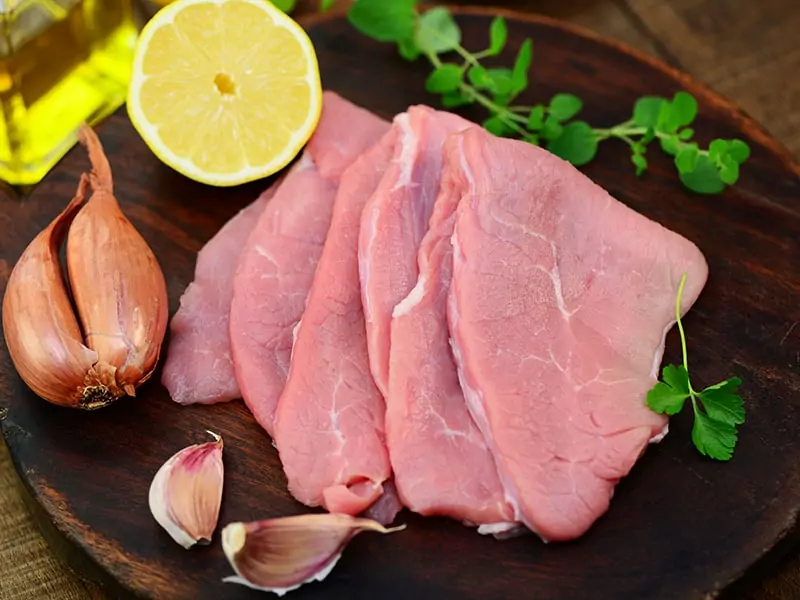
Veal – a delicate food beginning with V, is the meat of calves – a young domestic cow (or bull), which is totally different from cattle (older ones). As a whole, veal is more costly than beef, and most veal derives from male calves (often dairy breeds).
On the other hand, veal comes in several varieties varying by region. Their meat color also varies based on their food. For instance, milk-fee calves have creamy pink or ivory flesh with a firm texture, while grain-fed ones have darker meat.
In culinary, veal normally comes in cutlet form, which is very popular in French and Italian cuisines. Also, its bones are useful to make sauces, bases, or soup.
However, as veal is a baby cow, which people will send to slaughter when they are under 1 year old, many consider veal production cruel. Moreover, veal production in crates has been banned in some European countries, like Finland, or in some states of America.
Nutrients (100g raw lion)
- Energy: 740.57 kJ
- Saturated fat: 3.6 g
- Total fat: 10 g
- Cholesterol: 59 mg
- Protein: 20 g
- Vitamin B3: 6.62 mg
- Vitamin B12: 2.46 μg
- Iron: 0.8 mg
- Phosphorus: 222 mg
- Potassium: 241 mg
- Selenium: 16.20 μg
- Zinc: 2.01 mg
Benefits:
- Veal meat is super lean (or lean) and contains a lower fat than beef.
- Offer more than 10% of the daily value for vitamin B3, B6, B12, niacin, zinc, selenium, and protein.
- The veal liver is rich in vitamin A.
Drawbacks:
- Many people avoid eating it due to the cruelty of veal production.
- Veal’s offal consists of a high cholesterol amount.
4. Lamb, Hogget, and Mutton
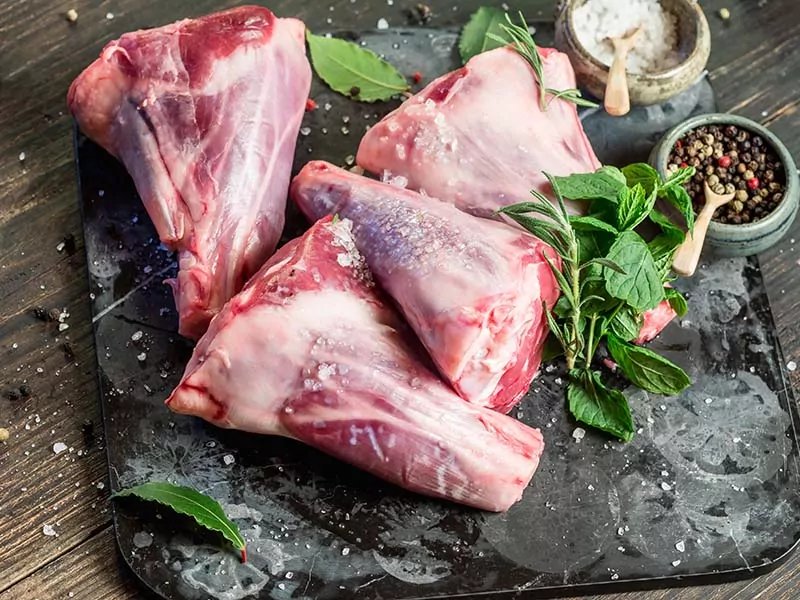
Lamb, hogget, and mutton are domestic sheep’s meat. But how come there are 3 different names for the same meat. Lamb indicates under-1-year-old sheep, hogget is a 2-year-old animal, and olders are mutton, which lamb is the most expensive one.
The way people use these terms is also different by country. In the USA, lamb and mutton are preferable. Lamb meat plays a prominent role in various tasty Mediterranean dishes, particularly in Greek, Turkey, Jordan, and other cuisines.
Some countries, like Australia, New Zealand, Norway, and South Africa, are unfamiliar with the term “hogget”, while this is the favorite meat in England. Interestingly, “mutton” refers to goat meat in South African cuisine and Caribbean food menus.
Generally, the older the sheep, the darker their meat. There are 3 major lamb cuts: forequarter (neck, front legs, ribs to its shoulder blade, and shoulder), loin (lamb saddle, which is the best cut of lamb), and hindquarter (hip and rear legs).
Nevertheless, lamb has a unique taste that you can barely forget. If you do not know what idea to use up your leftover lamb, luckily, there are various recipes to do that. Whether they are freshly made or leftover, lamb is 1 of the healthiest meat types you should try.
Nutrients (100g raw lamb ground)
- Energy: 1,179.89 kJ
- Saturated fat: 10 g
- Total fat: 23 g
- Cholesterol: 73 mg
- Protein: 17 g
- Vitamin B3: 5.96 mg
- Vitamin B12: 2.31 μg
- Iron: 1.55 mg
- Phosphorus: 157 mg
- Potassium: 222 mg
- Selenium: 18.80 μg
- Zinc: 3.41mg
Benefits:
- A powerhouse of iron, vitamin B12, B6, zinc, niacin, and other nutrients.
- Lamb meat can improve your immune system, bone health, muscle maintenance, etc.
- Contain a large amount of healthy fat (e.g., omega-3).
Drawbacks:
- High consumption leads to a higher risk of cancer and cardiovascular disease.
- Can increase the bad cholesterol in your body.
Let’s learn how to differentiate lamb and mutton with some insights about their benefits.
5. Goat
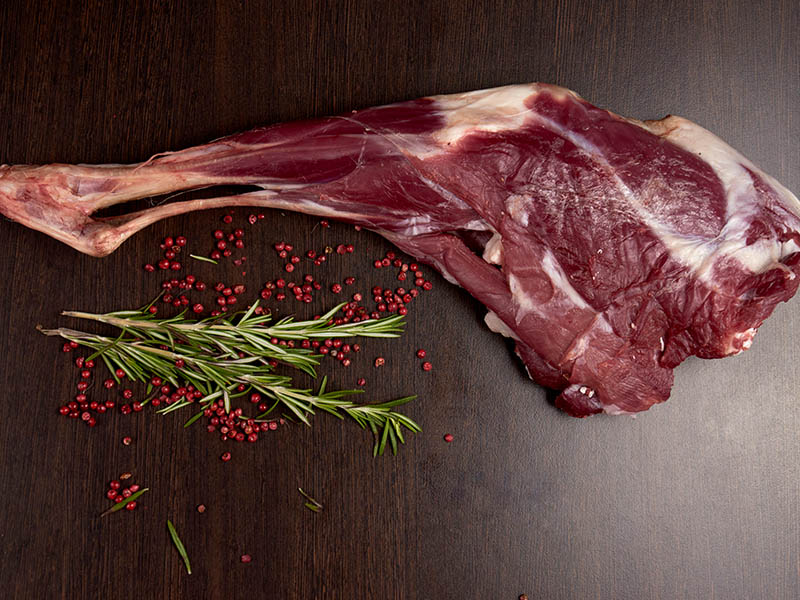
Goat meat is another red meat kind that has been a staple component in exotic African recipes for decades. You can also spot many delicacies made with goat meat in Mexican, Indian, Middle Eastern, Caribbean, etc., but less common in Europe and North America.
Compared to lamb and beef, goat meat is leaner and contains less fat, making them a healthier choice for everyone. Their flavor is quite savory; however, it is less sweet than beef but sweeter than lamb.
People also raise goats to make many goat cheese varieties. Goats have fewer calories than chicken or beef. Therefore, it would be better to cook them in low heat or slow-cook to retain the meat’s moisture and tenderness.
There are many methods to prepare it, like braising, grilling, stewing, baking, BBQ, canning, or making jerky. In traditional Caribbean foods, the locals usually use a mature goat to have a more pungent flavor with a tougher texture, while young ones are preferable in other places.
On the other hand, Nepal’s authentic delicacies cooked with goats are noteworthy. And these dishes are specially served on significant occasions in the country. Or, if you love Indonesian cooking ideas, you can try their skewered goat or goat curry. They are very delicious.
Nutrients (100g raw)
- Energy: 456.06 kJ
- Saturated fat: 0.7 g
- Total fat: 2.3 g
- Cholesterol: 57 mg
- Protein: 21 g
- Vitamin B2: 1.12 μg
- Vitamin B3: 3.75 mg
- Vitamin B12: 1.13 μg
- Iron: 2.83 mg
- Phosphorus: 180 mg
- Potassium: 385 mg
- Zinc: 4 mg
Benefits:
- Healthier choice than beef and pork (as it has leaner protein and less saturated fats).
- Low cholesterol can reduce the risk of cardiovascular disease.
- High in vitamin B12, iron, potassium.
Drawbacks:
- Have an intense gamey flavor, which is not ideal for many people.
- Not a recommended meat for those who have liver disease (due to its high protein level).
- Excessive consumption also leads to some illnesses relating to heart health, cancer, or diabetes.
6 Different White Meat Types
White meat is simply those with pale (white) color flesh before and after cooking. The best example, in this case, is poultry, especially in the breast part. If you are throwing a party this weekend with poultry, ensure to use high-quality poultry shear to cut them beautifully.
Poultry also contains myoglobin protein but in a lower amount. Thus, their meat is not too dark like red meat. Poultry meat in the leg and thighs is darker since myoglobin is mostly found in the muscle. On the other hand, in nutritional studies, seafood is also a type of white meat.
6. Chicken
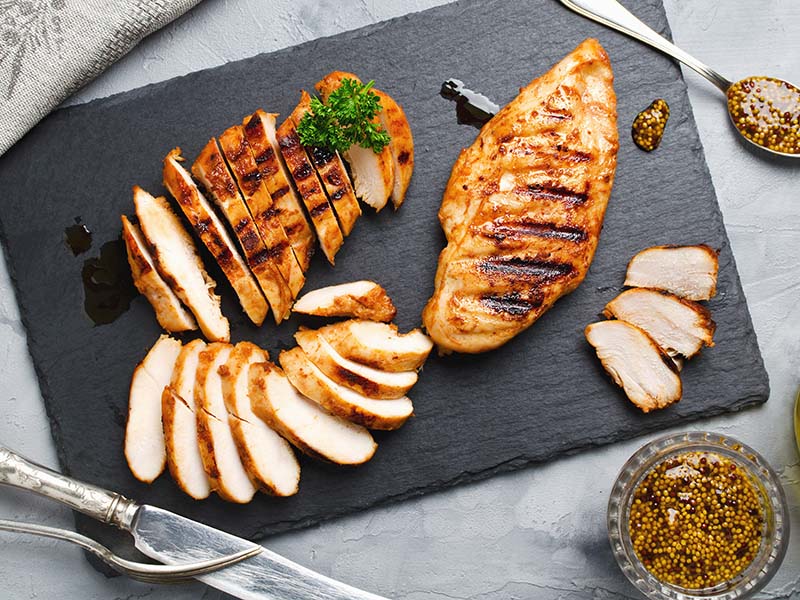
Chicken is 1 of the most popular consumed domestic birds globally. In the USA, a person can consume 81 pounds of chicken annually. Besides using their meat, humans also use their eggs or raise them as a pet.
Chicken has been a human food source for centuries. Their origin is still in debate as some believe they are from Asia, while others claim chicken was found in the Americas, Africa, Europe, or the Middle East.
There are many terms to refer to a chicken based on its gender and age. In short, if you want to call an adult male chicken, “rooster” or “cock” are acceptable. And “hen” is for adult female chickens.
Chicken meat is quite easy to cook and consume. You can buy fresh, ground, or canned meat, and there are also many recipes to cook with canned chicken or cooking ideas with ground chicken. Roast, grill, bake, fry, and steam; choose your favorite cooking method and prepare it.
Chicken meat has a high protein amount and less fat, making them a good choice for healthier diets. What’s better, chicken breast is 1 of the most nutritious meat for anyone. And most chicken meat is very affordable.
However, as this meat might contain parasites (e.g., fleas, worms, ticks, etc.), and other diseases like bird flu, you should not buy chicken from contaminated areas, and cooking them thoroughly is a must.
Nutrients (100g raw)
- Energy: 656. 89 kJ
- Saturated fat: 2.1 g
- Total fat: 8.1 g
- Cholesterol: 77 mg
- Protein: 20 g
- Vitamin B3: 5.41 mg
- Vitamin B5: 1.26 mg
- Vitamin B6: 0.34 mg
- Vitamin B12: 0.37 μg
- Iron: 1.22 mg
- Phosphorus: 190 mg
- Potassium: 242 mg
- Zinc: 2.08 mg
Benefits:
- More affordable than pork and beef.
- Lower fat, low cholesterol, and rich in protein.
- Good for heart health, weight watcher, better for mood since chicken includes amino acid tryptophan (a hormone that can boost a good mood).
Drawbacks:
- Many chickens might contain bacteria, parasites, and even E. coli contamination, which leads to food poisoning.
- Overconsumption or cooking chicken with too much oil might link to cardiac disease.
Chicken vs. pork; which meat is better for your health? Check here to find an answer.
7. Turkey
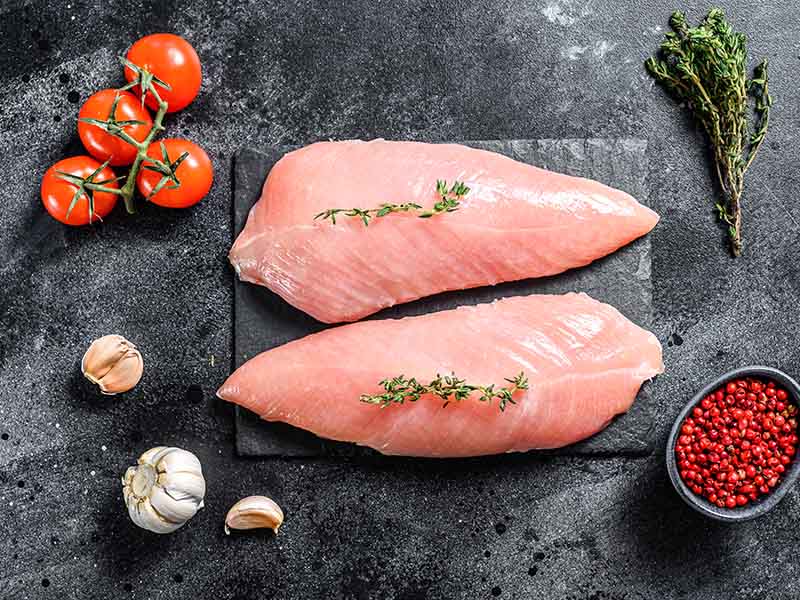
Domestic turkey is another familiar food in many households, especially North America. This meat is the symbol of the Thanksgiving holiday and Christmas in many Western countries.
You can buy them easily in the supermarket in many forms: a whole fresh (or frozen) one (without feathers, feet, and head), cut, or ground turkey.
Ground turkey is even healthier than ground beef, but learning ways to recognize if ground turkey goes bad to ensure safe consumption is important.
Plus, turkey eggs are not as common as chicken eggs, but turkey is also a perfect substitution for chicken. However, cooking turkey requires precise timing and careful preparation since they tend to be drier than other poultry.
You should learn some tips to know whether your turkey is done. The 2 most common cooking methods for this meat are roasting and baking for hours. In some places in South America, people also deep fry it with a turkey fryer for 30 to 45 minutes.
Unlike the chicken and duck, the turkey is a big-sized bird, and its meat is quite darker than others. Turkey’s lean protein is as good as chicken, and they are also a low-fat meat kind. Of course, you should consume turkey at an appropriate level.
Nutrients (100g raw breast)
- Energy: 465 kJ
- Total fat: 0.7 g
- Protein: 24.6 g
- Vitamin B3: 6.6 mg
- Vitamin B6: 0.6 mg
- Iron: 1.2 mg
- Phosphorus: 206 mg
- Potassium: 293 mg
- Zinc: 1.2 mg
Benefits:
- Quite similar to chicken with high lean proteins, low fat, and low cholesterol than pork, beef, and chicken.
- Turkey meat can improve mood since it contains tryptophan like chicken.
- Can prevent anemia.
Drawbacks:
- Turkey might have a high sodium content, and their skin contains more fat.
- Many turkeys have E. coli bacteria.
8. Duck
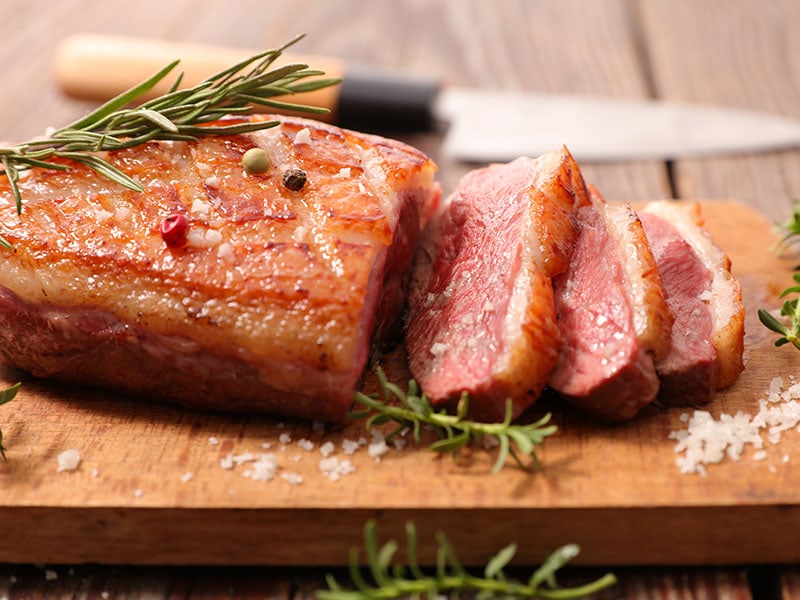
Duck – an excellent food starting with the letter D, either freshwater or saltwater species, belongs to the family Anatidae (including swans and geese). And duck meat is a significant food source in many cuisines with perfect moisture and tenderness (if you cook them right).
The popular domesticated duck is mallard – a freshwater type. Pekin duck is also a favorite type among Americans, especially North American people. In traditional Indian foods, duck meat is 1 of the key ingredients to create many delicious Indian dishes.
But speaking of ducks, it would be a huge miss if I did not mention the Peking duck. It is a famous Chinese-style dish made from Pekin duck and is usually served with cucumbers, Hoisin sauce, scallions, and spring pancake as a wrapper.
There are no limited ways to cook duck. Duck meat is also white meat though it is darker than turkey and chicken. Duck’s skin is also much fattier and thicker than the other 2 types, and their taste is stronger than chicken.
Despite their fat being quite high, it is similar to olive oil’s fat (including polyunsaturated and monounsaturated fats), which means it is also healthy if consumed on a regular daily basis.
Nutrients (100g raw)
- Energy: 1,690.34 kJ
- Saturated fat: 13 g
- Total fat: 39 g
- Cholesterol: 76 mg
- Protein: 11 g
- Vitamin B3: 3.93 mg
- Vitamin B5: 0.95 mg
- Iron: 2.4 mg
- Phosphorus: 139 mg
- Potassium: 209 mg
- Selenium: 12.4 μg
- Zinc: 1.36 mg
Benefits:
- Great source of nutrients like iron, B vitamins, selenium, and more, and even higher than chicken.
- Can improve human energy, immunity, body mass index, and blood cells.
Drawbacks:
- If overconsumption, high-fat content might result in several illnesses (e.g., diabetes, cancer, and cardiovascular problems).
9. Goose
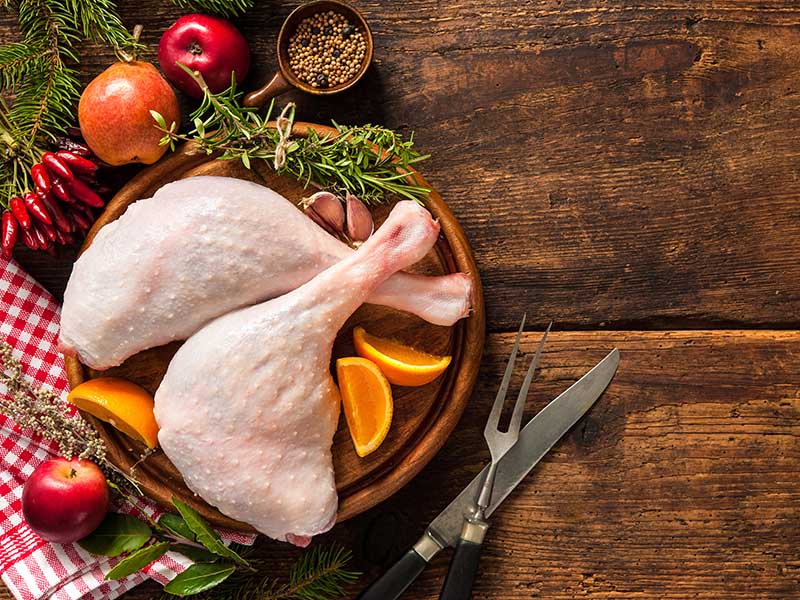
“Goose” indicates either male or female bird in the Anatidae family; however, “gander” is more specific to refer to male animals. Moreover, there are 2 main types of geese: white geese and grey geese.
Goose meat – a wonderful food beginning with G, is not easy to find (like duck or chicken), but they are also excellent meat with stronger flavor and dense texture. They are also rich in protein and other nutrients, but the fat is higher than chicken, particularly in the skin and leg parts.
So if you want to consume less-fat goose meat, choose the breast part. Compared to other white meat, goose meat is relatively darker. Still, the goose is a type of white meat. They are not typical animals raised in factories or farms.
The ideal way to cook goose is roasting. Roast goose is a famous dish in Chinese cuisines (called Siu Mei) or Siu Ngoh in Hongkong food menu. A good-quality roasted goose must have crispy skin with juicy meat inside.
It is also famous in other places like Europe and the Middle East. For example, roast goose is an authentic Austrian delicacy called Martinigans. Other European nations also consume it on other holidays, like Christmas and St. Martin’s Day (11th November).
Goose recipes are countless, which contain other ingredients. You can stuff your food with fruits, nuts, veggies, etc.
Nutrients (100g raw)
- Energy: 1,662. 26 kJ
- Saturated fat: 9.8 g
- Total fat: 34 g
- Cholesterol: 80 mg
- Protein: 16 g
- Vitamin B3: 3,61 mg
- Vitamin B5: 1.29 mg
- Vitamin B6: 0.39 mg
- Iron: 2.5 mg
- Phosphorus: 234 mg
- Potassium: 308 mg
- Zinc: 1.72 mg
Benefits:
- High in B vitamins, riboflavin, especially goose’s iron is richer than chicken.
- Can support human immune, digestion, bone, and muscle health.
Drawbacks:
- Goose meat is not popular, so its price is higher than other chicken or duck.
- Excessive consumption results in cholesterol problems.
Do you want to upgrade your roast goose for Christmas? If yes, this recipe will guide you to prepare it perfectly.
10. Pheasant
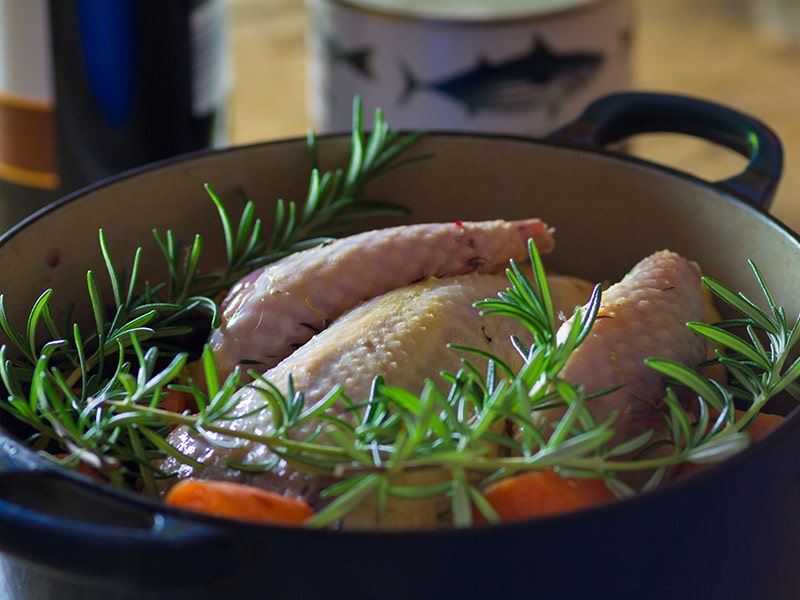
Pheasant is an exotic and expensive white meat compared to other poultry. This bird is native to Eurasia with several pheasant varieties, including Ring-necked, Colchis, Japanese, Green, or common pheasants.
Moreover, pheasants can be wild or farm-raised animals (mostly), and their flavor is reminiscent of chicken but with a mild gamey undertone. If they are wild ones, you can sense a pungent gamey taste in their meat.
On the other hand, the domestic pheasant has lighter meat color, while wild animals’ flesh is darker. As they are also fairly-lean meat, do not overcook pheasant to avoid tough, dry, and tasteless dishes.
Pheasant is well-liked meat in North Korean food culture. In the past, it was also a key ingredient in authentic food in Georgia, specifically, the Chakhokhbili dish.
Regarding cooking methods, roasted pheasant or stuffing it with other ingredients is a top choice. They can go well with nuts, cabbage, bacon, etc.
Nutrients (100g raw)
- Energy: 556.47 kJ
- Saturated fat: 1.2 g
- Total fat: 3.6 g
- Cholesterol: 66 mg
- Protein: 24 g
- Vitamin B3: 6.76 mg
- Vitamin B12: 0.84 μg
- Iron: 1.15 mg
- Phosphorus: 230 mg
- Potassium: 262mg
- Zinc: 0.97 mg
Benefits:
- Hava dense nutrients with fewer cholesterol, fat, and calories.
- Leaner meat than other poultry and beef.
Drawbacks:
- Might be tricky to find pheasants in the marketplace, especially in some Western nations.
This demonstration will teach you the best way to cook with pheasant.
11. Seafood
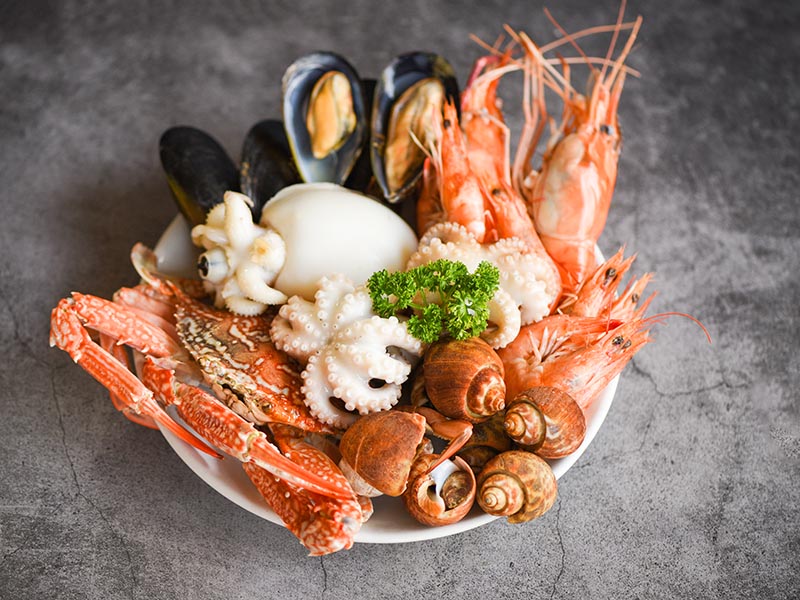
Seafood generally has white color before and after cooking. Therefore, people also count them in this white meat group.
Seafood is a healthy food source from the sea. Humans have harvested and consumed it since the Old Stone age, and it has become a staple food in some cuisines, like some delicious Irish foods. It is also an excellent component in many Cajun cooking ideas with many flavor surprises.
There are many types of fish and shellfish globally, but the common ones are herring, tuna, salmon, shrimp, clams (with several clam varieties), scallops, oysters, squid, etc.
Nutrients in seafood vary based on their species. However, most of them have extensive protein, omega 3, and other nutrients.
Interestingly, people consume seafood, either raw or cooked. For instance, genuine Japanese dishes with sashimi and some sushi styles use raw fish or meat to prepare.
But there are certain health hazards regarding eating raw seafood, particularly those containing parasites or living in contaminated areas. Shellfish also cause several allergies ranging from mild (hive, itches, etc.) to life-threatening symptoms.
Nutrients (100g white fish)
- Energy: 560.66 kJ
- Saturated fat: 0.9 g
- Total fat: 5.9 g
- Cholesterol: 60mg
- Protein: 19 g
- Vitamin B3: 3 mg
- Vitamin B5: 0.75 mg
- Vitamin B12: 1 μg
- Phosphorus: 270mg
- Potassium: 317 mg
- Selenium: 12.6 μg
- Zinc: 0.99 mg
Benefits:
- Being rich in omega-3 fatty acids, vitamins, proteins, etc., which are great for your eyes, brain, heart, and immune system.
- Reduce the chances of common diseases.
Drawbacks:
- Might cause seafood allergy.
- Some seafood is high in mercury, which is not good for health.
The seafood industry is huge, but there are other secrets behind its success.
4 Types of Game Meat
What is game meat? Simply, they are just a group of different meat from land animals that are not raised on farms. Instead, people have to go hunting to catch these wild animals, which means there are numerous types of game meat.
They are, technically, can be either red or white meat (e.g., wild duck, rabbit, etc.). Since these animals are wild ones, their meat is leaner with a richer flavor than other domesticated meat. Here are 4 common game meat that you might (or might not) have tried before.
12. Wild Boar
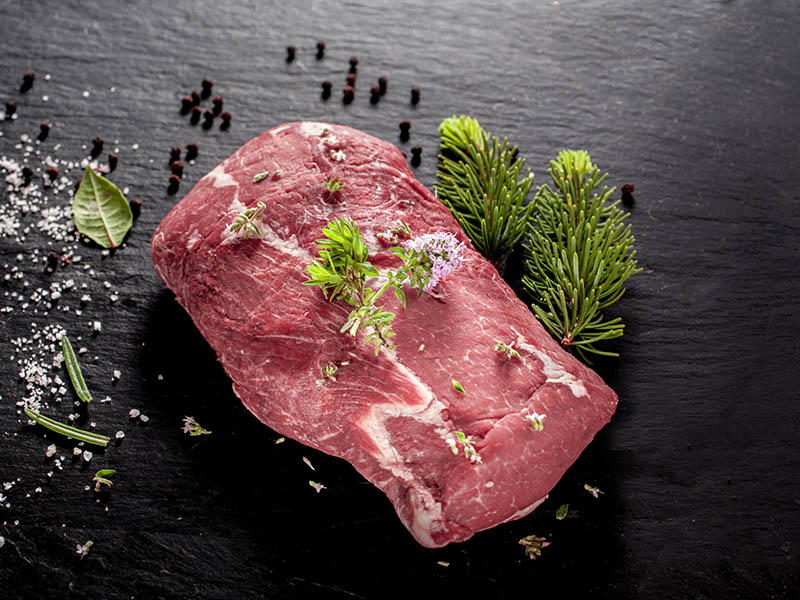
Wild board (aka wild pig) is a great food beginning with W originated from North Africa and Southeast Asia with many breeds. They are also the most widespread mammals in the world, becoming people’s favorite game meat for millennia.
They used to be a food source in Ancient Greeks. Today, the Romans normally enjoy boar meat with Garum (fermented fish sauce). Compared to domestic pork, wild boar is healthier and leaner. They contain more nutrition and amino acids.
Wild boar’s flesh tends to be darker in red than pork. Their flavor is strong, gamey, sweet, and quite nutty since grass and nuts are their main diets. Using the wild boar meat to make various styles of pate is also preferable.
Generally, wild boar meat is tougher in texture, but since their muscles have more marbling, cooking wild pork seems quicker than pork. Of course, you have to cook them fully before serving your wild boar dish.
Nutrients (100g raw)
- Energy: 510.45 kJ
- Saturated fat: 1 g
- Total fat: 3.3 g
- Protein: 22 g
- Vitamin B1: 0.390 mg
- Vitamin B3: 4 mg
- Selenium: 9.8 μg
- Phosphorus: 120 mg
Benefits:
- A healthier alternative to pork since it is leaner packed with a rich level of iron, zinc, and healthy monounsaturated fats.
- Really good for bodybuilders, athletes as it can improve muscle mass efficiently.
Drawbacks:
- Tend to be more expensive than pork.
Is grilled wild boat meat tastier than grilled pork tenderloin? Find your answer here.
13. Venison
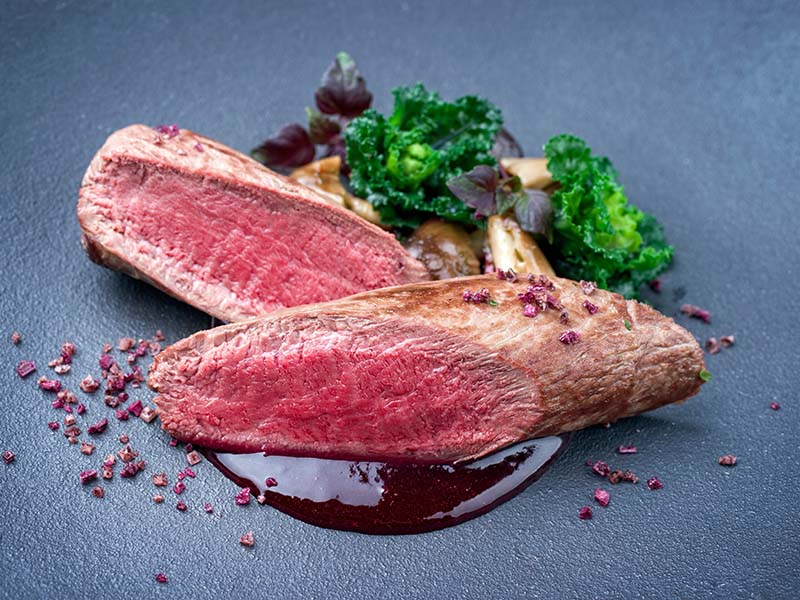
Venison is typical game meat from deer or elk. It also refers to all the parts of this animal, including its organs. And similar to regular beef or pork, people sell venison in separate cuts, like ribs, sirloin, or roasts.
Originally, the term “venison” derives from “venari”, meaning “to hunt” to indicate any animal killed by hunting. Venison cuts are leaner than comparable beef cuts with a smoother and firmer texture. But some leaner parts can be tougher.
You can prepare them like the way you use beef. This is a great source to make many sausage types as well. Minced meat, sausage, jerky, steaks, burgers, etc., are ideal solutions to cook with venison.
In the Tajik food list, the locals prefer using venison to make their Kabob Pamir. Overall, their meat is moist and relatively healthy for humans with low cholesterol, calories, abundant proteins, amino acids, and other nutrients.
But please avoid hunting deer that look (and act) weird or sick because they might have Chronic Wasting Disease (CWD).
According to Jewish and Muslim law, hunting deer is not allowed by Orthodox Judaism, but they are kosher and halal food. Kosher versions are common in the UK.
Nutrients (100g raw)
- Energy: 502 kJ
- Saturated fat: 1 g
- Total fat: 2.4 g
- Cholesterol: 85 mg
- Protein: 22.96 g
- Vitamin B3: 6.37 mg
- Vitamin B12: 6.31 μg
- Iron: 3.4 mg
- Phosphorus: 202 mg
- Potassium: 318 mg
- Zinc: 2.09 mg
Benefits:
- Venison saturated fat is lower than other red meat types.
- A wide array of B vitamins, iron, and protein.
Drawbacks:
- Deer might have Chronic Wasting Disease, which is not healthy for human consumption.
Click here and find out how healthy venison is.
14. Bison
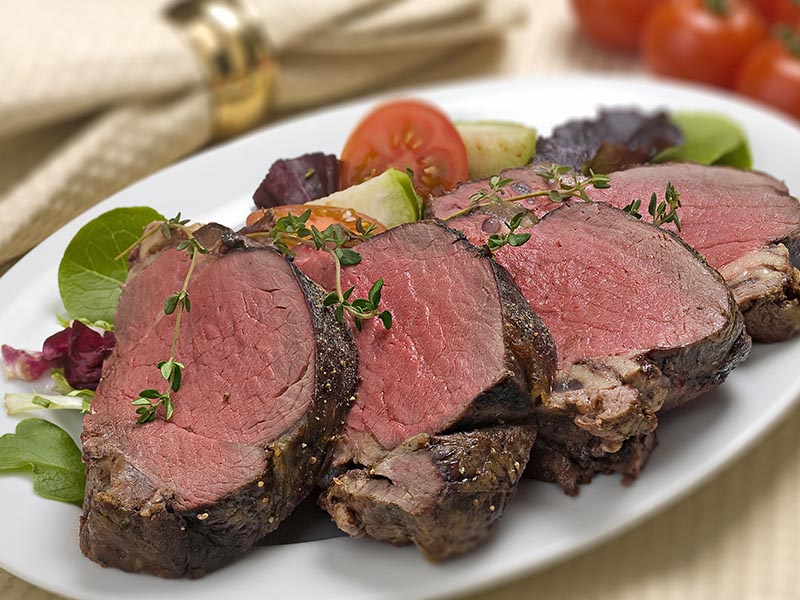
In the USA, commercial bison meat is not a big industry. Nevertheless, their nutrition is excellent for humans. If you do not know what bison meat is, this is the meat of buffalo. Many people mistake bison meat with beef, but if you look closer, you will find bison flesh is a bit darker and leaner than beef.
On the other hand, their texture is quite coarse. But the bison flavor is very close to beef and is not too gamey. Some people describe bison taste as more delicate than beef with a light sweetness.
Therefore, bison can work well in many recipes that ask for beef; for example, steak, or hamburgers, meatballs are usual recipes with ground bison. And do you know cooking bison steak is 1.3 faster than beefsteak? Yes, they are!
Most game meat is very lean. The cooking duration seems to be faster than other regular farm-raised meat. But it also raises another concern that bison is easy to overcook. In addition, people also use this meat type to make dog foods.
Nutrients (100g raw)
- Energy: 750 kJ
- Saturated fat: 3.5 g
- Monounsaturated fat: 3.3 g
- Cholesterol: 71 mg
- Protein: 25.45 g
- Vitamin B3: 5.96 mg
- Vitamin B12: 2.44 μg
- Iron: 3.19 mg
- Phosphorus: 213 mg
- Potassium: 353 mg
- Zinc: 5.34 mg
Benefits:
- Iron, zinc, selenium, B vitamins in bison are high.
- Good source of omega-3 fatty acids and lean protein.
Drawbacks:
- Can be a costly food source in some regions.
15. Rabbit
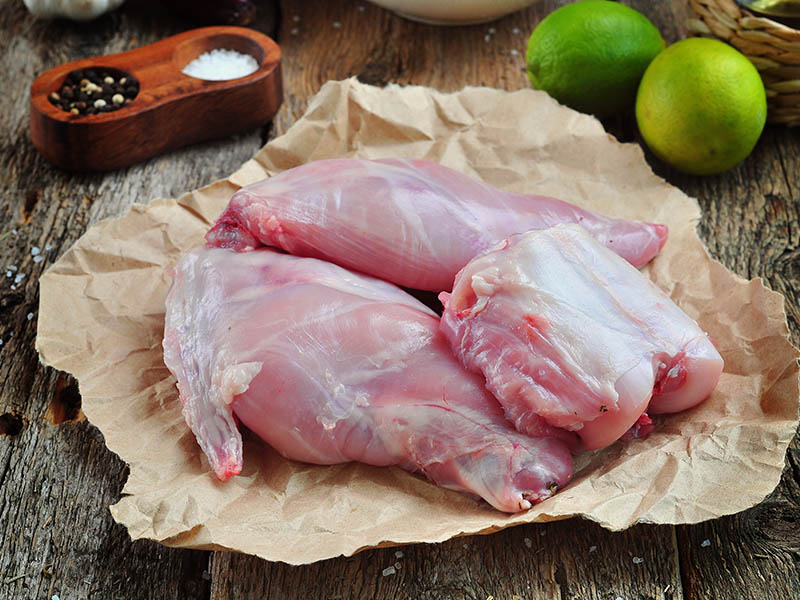
Rabbit (aka bunny) might not be too familiar in many countries, but still a good choice for health if consumed rightly. There are around 50 rabbit breeds; some live in the wild, while some are raised as livestock (but not too popular).
Compared to farm-raised ones, wild rabbits taste much better. Their meat is lean and tastes like chicken with a slightly gamey note. Moreover, They have a high amount of protein, minerals, low-fat, and low-calorie levels.
In the culinary world, fascinating Moroccan foods made with rabbits are noteworthy. Or rabbit stew in Maltese cuisine is also delicious. They play a special role in Sichuan cuisine in China. Thus, China, Italy, Spain, and France are some of the biggest rabbit consumptions.
The first domesticated rabbit can trace back to the Middle Ages. Besides using for their meat or fur, some rabbit species are ideal pets for humans.
Nutrients (100g raw)
- Energy: 602.5 kJ
- Saturated fat: 0.7 g
- Total fat: 2.3 g
- Cholesterol: 81 mg
- Protein: 22 g
- Vitamin B3: 6.5 mg
- Iron: 3.2 mg
- Phosphorus: 226 mg
- Potassium: 378 mg
- Selenium: 9.4 μg
Benefits:
- An excellent source to get proteins, vitamins (especially B vitamins), iron, and other nutrients to improve humans’ health.
- Contain less fat and calories.
Drawbacks:
- Might not be a cost-effective choice for low budgets.
- Wild-caught rabbits might have tularemia disease, leading to several issues if people consume them undercooked.
Other Meat Types
The following 4 meat types are not specific meat from a particular animal. Instead, they are a group of processed meat (like dried or cured meat, raw-fermented sausages, and fresh processed meat) and internal parts of animals (e.g., organ meat).
Organ Meat
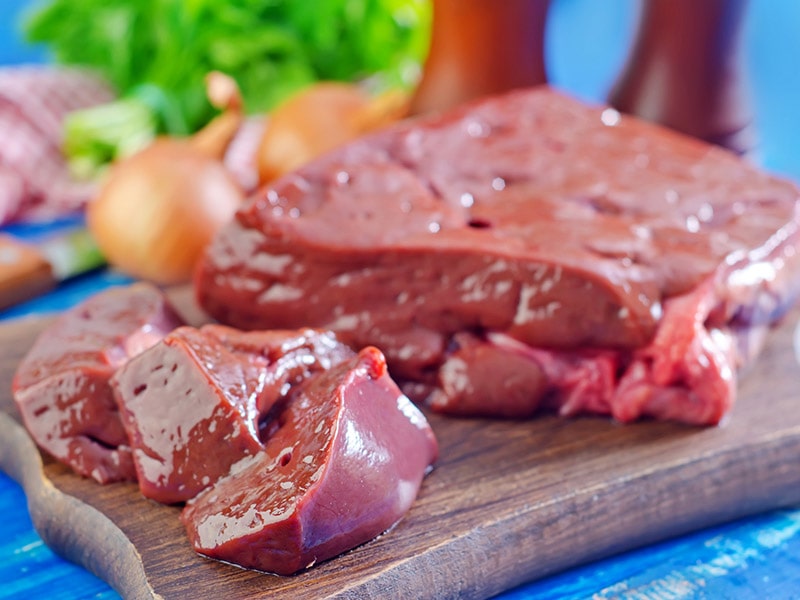
Organ meat (or offal) is the animals’ organs that people can use as food. Many delicacies are made from these parts, for instance, pâté (from the liver) or haggis (from sheep’s liver, heart, lung, and stomach.
The intestines of some animals are the common casing ingredient for making sausages. Also, they are ingredients in many holiday dishes for some regional cuisines, from Europe to Asia.
Kaszanka – a special Polish food that includes pig’s blood and offal, is similar to black pudding in the British delicacy list. Or, in Asian countries, you can find countless recipes cooked with these parts.
Dried or Cured Meat
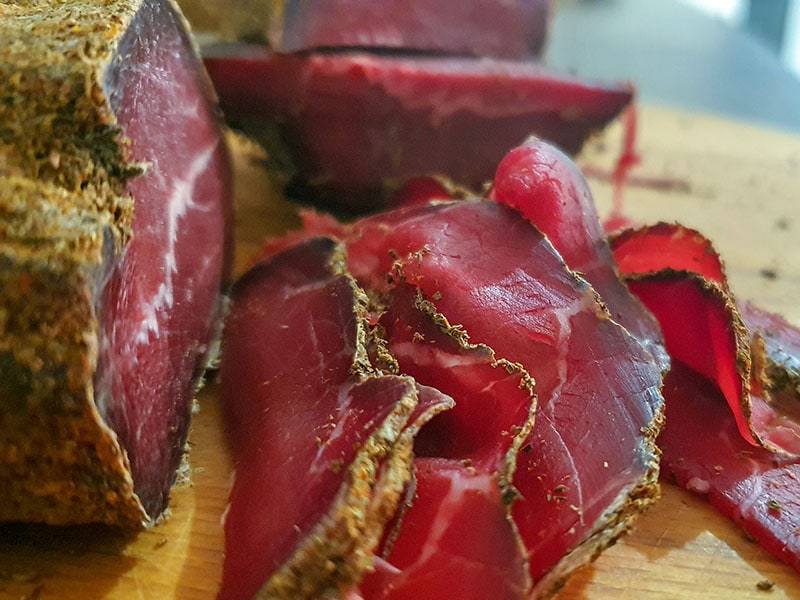
Dried meat is a specialty in many cuisines; for example, Carne Seca is a famous air-dried beef meat in the amazing Mexican cuisine. Or jerky – a convenient snack globally, which is marinated, dried (or smoked) meat strips made from pork, goat, lamb, beef, etc.
In Spanish cuisine, Jamón is a special dried cured ham made from pork. Indeed, all ham varieties are cured meat. They can be dry-cured, salt-cured, or wet-cured with a wide range of flavors, depending on their ingredients.
Compared to fresh meat, dried or cured meat has a longer shelf life. Some types can last in the fridge for up to 6 weeks, but for a precise expired date, check the package for more information.
Have you ever been curious about the history of cured meat? If yes, do not skip this brief introduction.
Raw-Fermented Sausages
Raw-fermented sausages (aka dry sausages) contain chopped (or ground) lean meat, fatty tissues, seasonings, curing agents which will be stuffed into casings and then undergo a fermentation process. Their flavors, colors, and textures vary based on their ingredients.
There are 2 fermented sausage types, including fermented semidry products produced in humid or cooler climates, and dry, spiced, and salted sausages in warmer weather. Salami, pepperoni, and chorizo are examples of raw-fermented sausages.
For more information, there are certain dissimilarities between salami and pepperoni that you should note – for example, their making process, versatility, ingredients, and more.
Fresh Processed Meat
If you see some breakfast sausage, bratwurst, longaniza, burger, kebab, patties, etc., sold in packages in stores, they are fresh processed meat.
In short, this is a group that encompasses all products containing fatty tissue, raw meat, spices, and other seasonings. Some products might have undergone additional treatment (like cooking or frying) to make them look more appetizing.
Some Ideal and Healthiest Meat To Consume
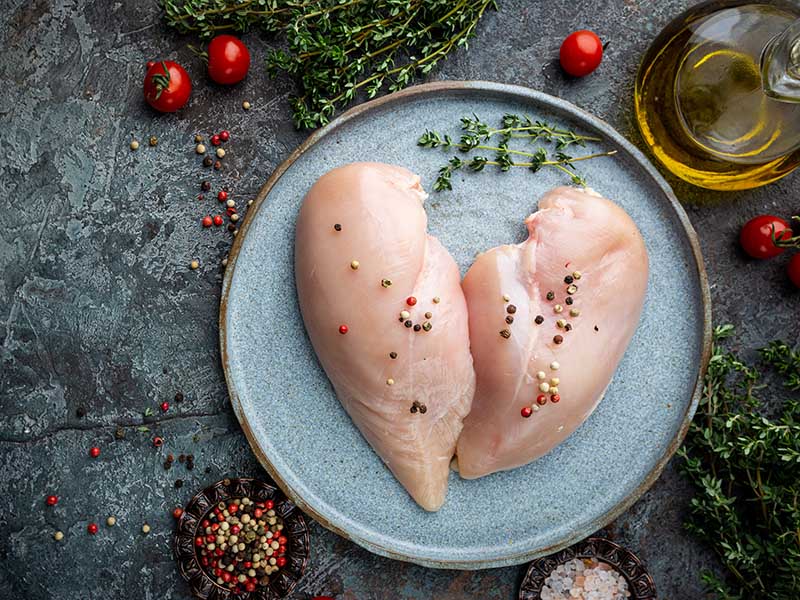
If you are a weight watcher or health-conscious, you should consider these options for your daily diet. Overall, there is no worse meat if you eat them in moderation. And if possible, try not to over-consume processed meat.
- Beef Sirloin: This is 1 of the leanest beef parts since their total fat, saturated fat, and cholesterol are lower than other cuts.
- Ground Beef: There are certain dissimilarities between ground beef and ground chuck. Though ground beef contains saturated fat, they also have many B vitamins, protein, and iron. Plus, 95% lean ground beef (95% lean/5% fat) is better for your health.
- Skinless Poultry: Skin is high in fat. Though most of them are healthy, removing them is still much better before cooking.
- Pork/Lamb Chops: Another leaner cut of the animals that contain a greater amount of high-quality proteins and minerals. They are the perfect choice to promote weight loss, as long as you eat them in an appropriate amount.
- Chicken/Turkey Breast: Comparing chicken breast and chicken tenderloin, chicken breast has more advantages in being a healthier cut since it contains the leanest protein and a small amount of fat.
Cuts of Pork and Beef That You Might Not Know Before
Pork and beef are 2 well-loved meat, and they are available in many different cuts. So if you are unsure about which cut is suitable for you and your family, keep scrolling down the page for more information.
Pork Anatomy With Different Cuts
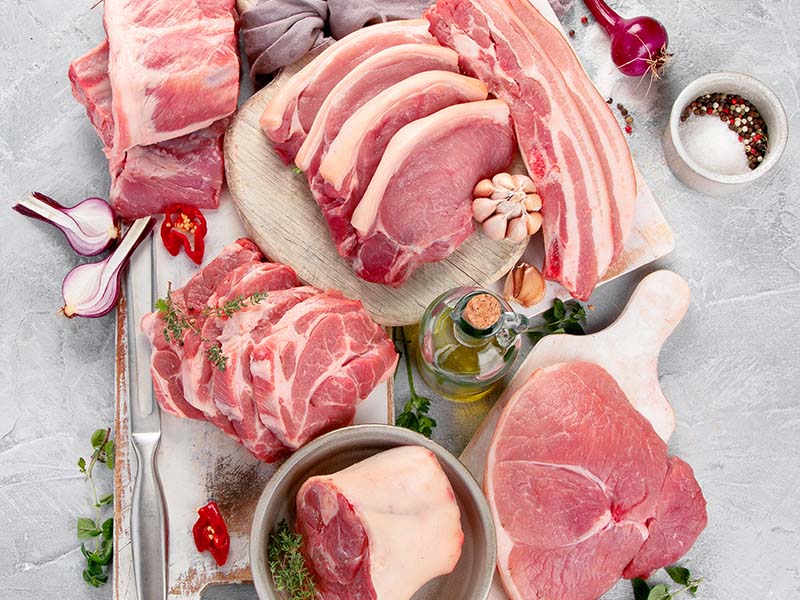
There are several distinctive pork cuts, but here are 6 popular parts that many people love to choose to create numerous delicacies.
- Pork Belly: It is a cut from the pig’s belly after removing the loin and spareribs. These are boneless and fatty cuts that you can slow cook or make bacon with them. You can also find many options to pair with pork belly with simple instructions.
- Pork Chops: This is a versatile cut from the loin part (from hip to shoulder of a pig). Easy and quick to cook. However, you should ensure some tricks to check whether pork chops are done or not for safe eating.
- Pork Loin: A cut between a pig’s shoulder and the beginning area of its leg is pork loin, which can be bone-in or boneless. It is also a juicier and more flavorful part of a pig so you can cook it in several ways.
- Pork Shoulder: Remember, pork loin and pork shoulder have differences. And as the name suggests, it is a cut from a pig’s shoulder above their forelegs. These cuts are extra flavorful that can fit well in plenty of cooking recipes.
- Pork Ribs: This is a general term to refer to many types of pork ribs. It can be spareribs, back ribs, rib tips, and more. Regardless of their kind, ensure the precise timing to cook pork ribs at 350 degrees in ovens to avoid overcooking or undercooking ribs.
- Pork Tenderloin: Pork loin and pork tenderloin are not the same. It is a smaller and longer cut from the muscle along a pig’s backbone. They are very easy to cook, so if possible, try to make some sides for pork tenderloin for the most enjoyable meal.
Pork 101 and different cuts of pork that you should know.
A Detailed Guide To Beef Cuts
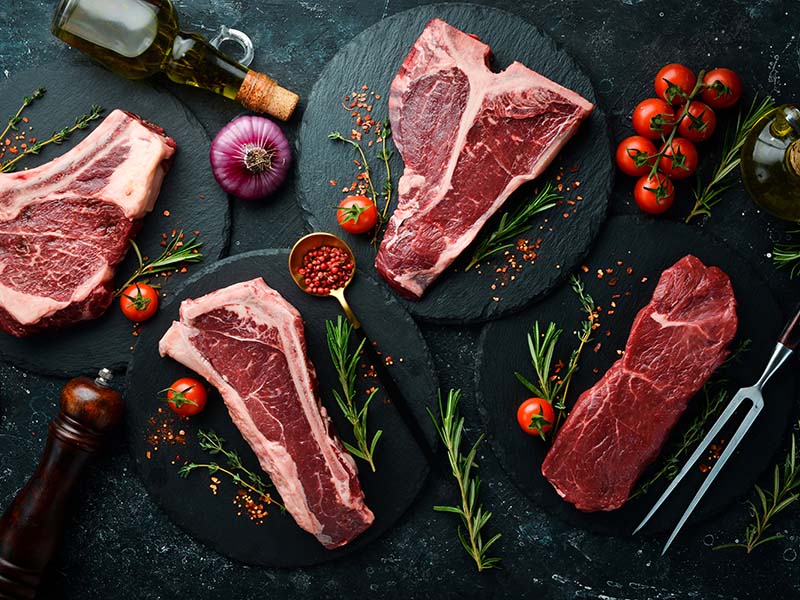
Similar to pork, I would like to briefly introduce 6 common beef cuts worldwide with their different traits. So if you are a beef lover, do not miss this section!
- Sirloin: Looking for perfect recipes for dinner on Sunday? Let beef sirloin help you make sure your dishes come out wonderful. Sirloin steak derives from a cow’s rear back with 2 parts: top (tender) and bottom sirloin (less tender).
- Tenderloin: If you seek the most tender beef cut, tenderloin (located within the loin) is an amazing option. It is also an expensive cut, but of course, if you cook them correctly, they are worth every penny. Slow-cooking or roasting is a common way to prepare it.
- Ribeye: Also known as prime rib, is a cut from the rib primal of a cow. These cuts can be bone-in or boneless in large sizes. They are also tender, juicy, and rich-flavored cuts with many cooking options.
- Brisket: It is a cut from the breast section of a cow (right under the first 5 ribs). You will mostly find boneless brisket, and they are tough cuts, requiring long and slow cooking. In the meantime, you can prepare some brisket accompanion to make your meal more pleasant.
- Rib: There are 3 types of beef ribs: back ribs, chuck short ribs, and plate short ribs. All of them are full-flavored cuts that are ideal for long-period cooking so they can melt in your mouth. Make sure you know how to check your ribs are done or not to prevent dry ones.
- Chuck: This is a part of the sub-prime cut that people normally broil, braise, grill, or roast. Beef chuck is ideal for making ground beef since it is a perfect balance of fat and meat.
Do not skip this video if you are still unsure about choosing suitable beef cuts!
Meat Preparation Is Important As Well!
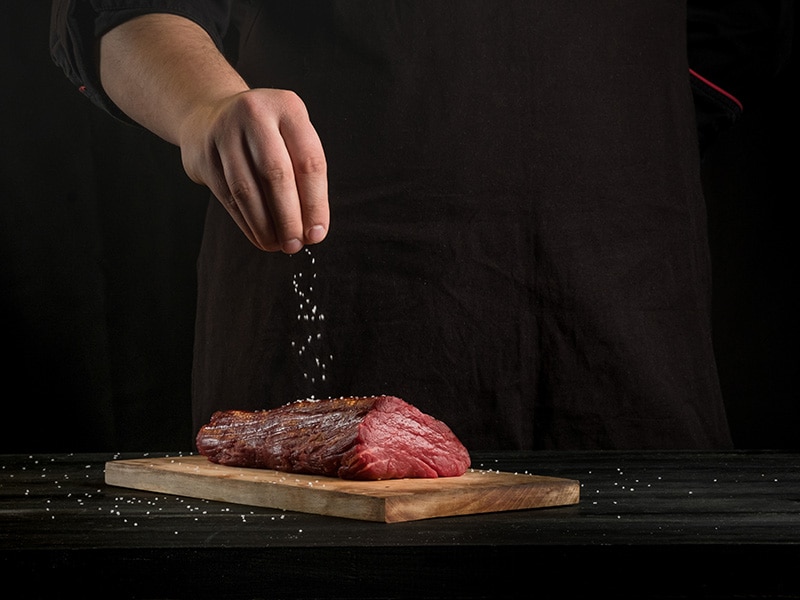
After choosing the right meat for yourself, what do you usually do to ensure they will come out perfectly and tasty after cooking? Here are a few important notes about meat preparation that you should not skip.
- Prepare Sufficient Tools: First, you have to prepare all kitchen tools and ingredients that you want to use to prep and cook the meat.
- Thaw Slowly If They Are Cold: Let them rest outside the fridge around (or at least 2 hours for red meat or less than 30 minutes for poultry). If they are frozen, you can thaw them slowly in the fridge overnight.
This way will ensure your meat can reach room temperature before cooking so you can cook them evenly and at the correct time.
- Air Out The Vacuum Packaged Meat: Some of you might sense the stale odor from these products, but this is not from the meat but the packing. So what you have to do is just dry off the vacuum package.
- Use Salt: Patting salt on the meat surface before cooking is essential. Let it sit for 1 hour so the meat can absorb the salt.
- Marinating To Make The Meat More Flavorful: You can use your favorite marinade recipe to soak the meat. Allow 1 to 2 hours for them to penetrate. With tough meat parts, papaya can be an ideal meat tenderizer.
- Weight The Meat: Remember: the bigger the meat cut is, the juicier it can have after cooking. In contrast, if you cook a thinner piece, they can easily dry because their surface is more exposed to the heat, reducing the juice inside.
You can estimate the portion for each person (which might be around 120 to 200 grams/person). Plus, if you want your meat tastier, do not get rid of the fat before cooking since fat can increase the flavor of your food.
- Choose Appropriate Cooking Temperature and Time: Lastly, do not cook them at high heat for too long. You might end up with burnt or dry tough meat.
Common Dishes With Meat
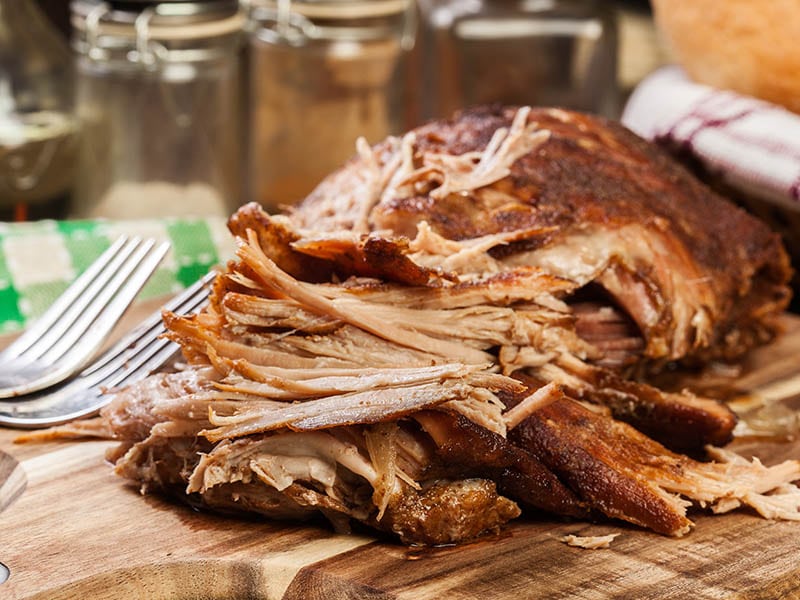
Finally, let’s wrap this article with some famous and widely-loved meat recipes. Some might require time and effort, whereas some are so easy to make.
Steak
Several steak variants might use either beef (usually) or pork. To make delicious steak, frying or baking are appropriate to ensure that.
On the other hand, do not throw away leftover ones because you can have many solutions to use up leftover steak and turn them into a new delicacy. Should I freeze steak, you wonder? Yes, it is a basic way to extend their shelf life.
This instruction is great guidance for having a juicy and tasty steak.
Stew
Speaking of cooking with meat, stewing is one of the most widespread methods, thanks to its versatility and simplicity.
Meat stew is also a simple idea to cook in Dutch ovens. Mix your favorite meat type (chicken, pork, beef, etc.), veggies, and other ingredients to prepare a hearty dinner for everyone.
Meatball
Meatballs or meatloaf are quick treats made from minced meat. And it is even more convenient as there are various good-quality frozen meatballs that you can buy in the supermarkets.
They come in a round shape resembling a mini ball that you can enjoy in your hearty Italian-style soup. If you accidentally cook too much of them, do not waste your food because there are other tasty treats to use up leftover meatballs to save your money.
Burgers
One of the key components in burgers is their meat patties made from ground meat (any type, but the most common one is beef). They have always been a global symbol in the fast-food industry with many options.
However, for a cost-effective choice, you can make them at home since there are plenty of top-rated frozen burgers on the market. And if you want to make your meal fulfilling, serve burgers with other side dishes like salad, fries, or mac and cheese.
Quick and simple smash burger is all you need for a home cook delicacy.
Pulled Pork/Beef/Chicken
Pulled pork is a top-loved American specialty with a tender and juicy texture. They are shredded barbecued dishes made from pork shoulder that you can enjoy with bread, sandwich, or their own.
With many delectable dishes to pair with pulled pork, these dishes have never failed me for a fulfilling meal. Additionally, there are numerous treats with leftover pulled pork that you can barely recognize that they are made from remaining food.
Seafood Chowder
If you are looking for an Irish-style delicacy to make this weekend, try seafood chowder. It consists of many types of seafood, such as scallops, shrimp, fish, and more, so you can customize it with your favorite ones.
As this is a creamy soup-based dish that is best served warmly, it is an excellent way to warm your stomach on cold days. On the other hand, if you need a quicker and more convenient chowder with seafood, there are many finest canned clam chowder that you can buy at stores.
What Are Your Best-loved Meat Types?
Tell me what meat you normally go with, and how you usually prepare them. Do they always come out perfectly as you expected? I bet they are.
Last words, I hope you can learn new things after reading this post. So you are satisfied with all the insights about these meat kinds, please click like and share with your loved people so they can master their knowledge regarding the world of meat.
Do not forget to leave your message or comment if there are other concerns about them. Thank you and enjoy!
